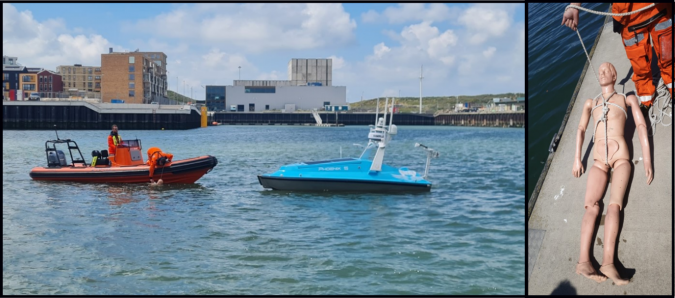Backscatter Analysis: Multibeam vs Sidescan Sonar in Low Water Environments
When conducting underwater surveys in shallow or low-water conditions, the choice of sonar technology plays a critical role in the success of the mission. Two prominent sonar technologies, multibeam echo sounders (MBES) and sidescan sonar, are widely used for various underwater applications, from mapping the seafloor to detecting submerged objects. Understanding how these technologies differ, particularly in low-water environments, is essential for making informed decisions during search and rescue missions, like detecting drowning victims, or for geophysical surveys.
What is Backscatter?
Backscatter refers to the sound waves that are reflected back to the sonar system after hitting an object or the seafloor. It is a key factor in understanding the material properties of the seabed or submerged objects, as it provides information on texture, hardness, and composition. The backscatter signature is often used to differentiate between types of materials, such as soft mud, rocks, or debris.
Multibeam Echo Sounder (MBES)
A multibeam echo sounder uses multiple sonar beams to provide a detailed and accurate map of the underwater environment. In low-water conditions, the technology benefits from:
- High resolution: MBES typically offers high-resolution bathymetric data, making it ideal for mapping detailed seabed contours.
- Wide coverage: The sonar system emits multiple beams at different angles, allowing it to cover a larger area in a single sweep.
- Backscatter intensity: Multibeam systems also capture backscatter data, helping to classify materials on the seabed and identify submerged objects, which can be particularly useful in search and rescue operations.
However, in low-water environments, where depth can be shallow and the water column restricted, the system's performance may degrade if there is interference from surface noise or the lack of sufficient water for clear sonar propagation.
Sidescan Sonar
Sidescan sonar, on the other hand, uses a narrow, fan-shaped beam directed to the sides of the vessel. This creates high-resolution imagery of the seafloor and submerged objects, with key characteristics:
- Detailed imagery: Sidescan sonar is excellent for creating high-resolution imagery of the seafloor, making it ideal for detecting objects such as wrecks or drowning victims.
- Low water adaptability: While MBES can lose effectiveness in very shallow water, sidescan sonar works well in depths as shallow as a few meters, especially if the vessel is equipped with appropriate sonar frequencies and power.
- Enhanced object detection: The backscatter data produced by sidescan sonar offers a clear picture of the seafloor and its irregularities, providing a useful tool for identifying submerged objects in low-water environments.
While the technology excels in imaging, it doesn't provide depth measurements in the same way that MBES does, and its performance can be influenced by water conditions such as turbulence and sediment.
Backscatter in Low Water
In low-water environments, backscatter intensity is a crucial factor for both sonar technologies.
- Multibeam sonar in shallow water often faces challenges due to the angle of incidence—when the sonar beam hits the seafloor at a steep angle, backscatter can be distorted or weakened. Shallow depths can also lead to reduced vertical resolution, making it harder to detect small or distant objects.
- Sidescan sonar generally maintains strong backscatter even in low-water scenarios, as the beams are oriented horizontally, minimizing the effect of depth on signal clarity. However, the interpretation of backscatter is often limited by water clarity and sedimentation.
Practical Applications
For search and rescue operations, such as detecting drowning victims (as discussed in the article “Detecting Drowning Victims Using an Autonomous Surface Vessel”), combining both sonar systems can offer complementary insights. Multibeam sonar might help with overall mapping and detecting large structures or terrain features, while sidescan sonar can be used to generate high-resolution images of the seafloor, identifying objects of interest like submerged bodies or debris.
Conclusion
In low-water environments, multibeam sonar and sidescan sonar each offer distinct advantages based on the specific objectives of the survey. The choice of sonar technology should depend on factors such as water depth, survey area, and the level of detail required. When used together, these technologies provide a powerful toolkit for underwater detection and mapping, enabling more effective and accurate surveys in challenging low-water conditions.


Share:
DJI Unveils the Matrice 4 Series: A New Era for Enterprise Drones
AlphaGeo Sponsoring Didcot Casuals Football Club